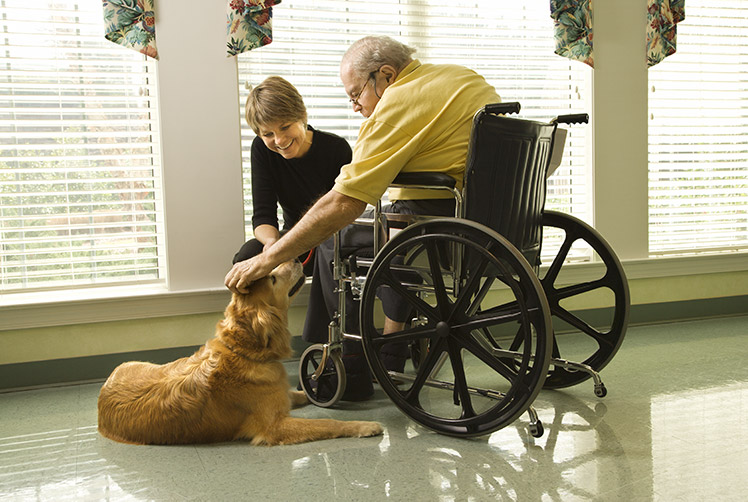
Everyone knows that dogs are a man’s best friend. Even the sight of a cute little puppy can greatly brighten someone’s mood, no matter how their day is going. Even though all dogs have this natural ability to make us feel happy, some selected furry heroes are tasked with improving our lives every single day. These kinds of pets are known as therapy dogs, who accompany their owners to volunteer in places such as hospitals, schools, and nursing homes. Of course, how do these dogs accomplish such a feat when there are so many types of places and people who need help?
Therapy Dogs vs. Service Dogs
To avoid any misconceptions, therapy dogs are not considered a type of service dog. Service dogs are animals that help their human perform certain tasks that they have difficulty with due to a disability. These dogs are trained with a specific task in mind, such as opening and closing doors or using a light switch. These dogs work as a team with their disabled owner to allow them independence and safety. Due to this, most service dogs have a “no petting” policy in place since human interaction could prevent the dog from helping their owner. In addition, some laws allow service dogs to accompany their owner into restaurants, hotels, and other places where common pets are not prohibited.
In contrast, therapy dogs are trained with a different motive in mind. They are meant to give psychological therapy to people other than their owner and in a variety of settings. These dogs must be friendly and easy-going as to not frighten others. Unlike service dogs, people are encouraged to pet and cuddle therapy dogs as much as they’d like. Although both types of dogs undergo training, therapy dogs do not have the same qualifications to enter pet-prohibited establishments as service dogs.
Therapeutic Visitation
Therapeutic visitation dogs are the most common type of therapy dog. These animals are household pets like any other, but their owners opt for them to visit people who need a bit of cheering up. The type of people who require therapy dogs varies immensely. For instance, some dogs come on to college campuses during finals week to relieve stress from students who are studying too much. Others go to hospitals to visit patients that are preparing or recovering from their surgery. Even other dogs can visit schools to give children the confidence they need to read aloud. These therapeutic methods have been scientifically proven to work for hundreds of individuals. Regardless of why they are there, therapy dogs have the ability to give people a sense of motivation, happiness, and hope for the future.
Animal Assisted Therapy
Animal-assisted therapy dogs are a specialized type of friend that can help therapists perform their job better. Studies have shown that patients can accelerate their recovery from chronic or acute diseases when a dog is present. This can include activities such as regaining motion in limbs or fine motor control. Unlike therapeutic visitation dogs, these animals are trained to be driven towards a certain goal for the patient, be it balance, strength and endurance, or cognitive ability. In addition to working with the patient physically, therapy dogs also give them the psychological benefits of therapy at the same time.

Facility Therapy Dogs
The final type of therapy dog is known as a facility therapy dog. These dogs are often found residing in nursing homes and assist the elderly with Alzheimer’s Disease or other mental illnesses. They often are trained to keep patients content and out of harm’s way. As stated, they are trained by a professional and live in the facility so they can be called upon when needed. Therapy dogs are useful in such situations because they can take patient’s minds off of their aches and hardships, give them the opportunity to communicate with others and rekindle warm memories of past pets.
Using a dog’s natural love of people as a healing tactic was incredibly groundbreaking, to say the least. Whether a dog is helping a child learn how to read or being a loyal companion to an elderly patient in their final moments, they are making a difference in the world nevertheless. The duty of a therapy dog is to generally improve the lives of people, and they accomplish this feat every time they see a smile on their new friend’s face. For that alone, we owe a great deal of gratitude to our furry little friends.
About Us
We've taken the guesswork out of caring for your pets. Our formulations are created by experienced veterinarians to address specific solutions for a variety of pet issues.
All of our products are:
As seen on:











